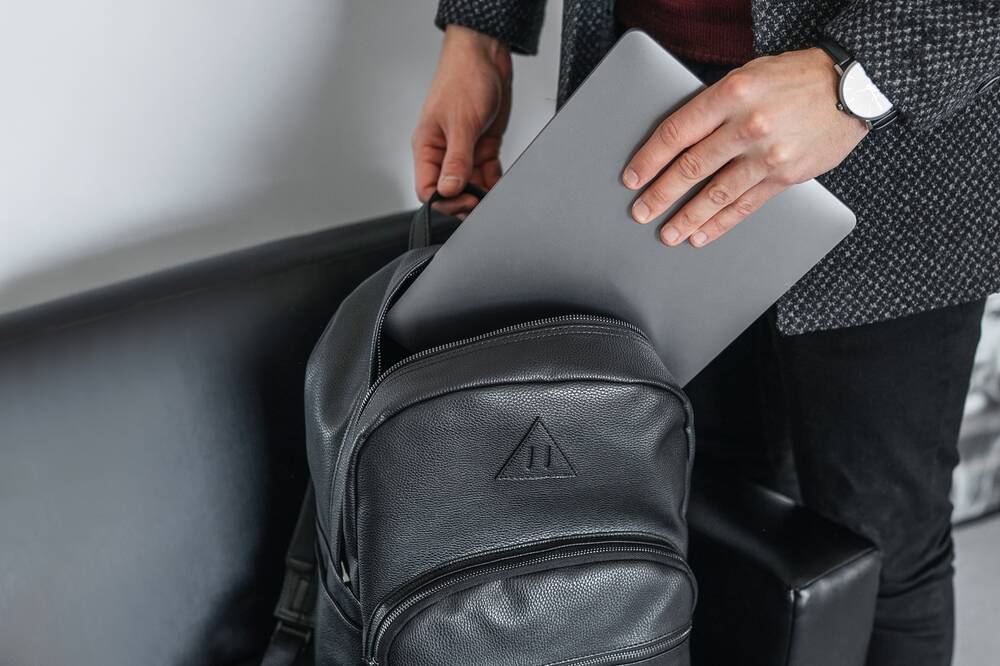6 survival strategies for remote workers returning to the office

This is branded content.
Transitioning back to an office setting after working remotely can be a challenging shift for many.
Having grown accustomed to the comforts and conveniences of home, the move back to a structured office environment requires adjustments both big and small.
This article offers six strategic tips to help make this transition smoother and less stressful.
Whether you've been away from the office for just a few months or for years, these strategies are designed to help you adapt effectively and regain your professional rhythm in a physical workspace.
Strategy 1: Prepare the night before
The first morning returning back to the office might be hectic, and your mind might be too focused on other things. It can be easy to leave behind something you need, or forget something important.
Consider getting everything ready the night before you start work.
If you usually bring any kind of briefcase or bag, have that already packed with anything you might need: pens, paperwork, your photo ID cards, etc.
Try to remember: What did you used to bring with you when you worked in the office?
You can also lay out your clothes for the next day, too.
There is nothing worse than trying to get ready for work, but not being able to find your belt, or your shoes, or that darned other sock.
And make sure you know where your keys are.
And don't forget the small things: A book to read, or earphones, or what about a drink bottle? Make sure you put your phone on to charge, too.
Maybe even pack a charger?
Strategy 2: Plan for the commute
One of the biggest advantages of working remotely is no commute time: just wake up, step over to your computer or desk, and you can start. But now you will be travelling to an office.
Remember to factor in commute time into your morning schedule.
This strategy will matter more to some people than others as it will depend on where you work. But there are plenty of small factors other than travel time to take into account, depending on your method of commute.
If you are taking public transport to work: make sure you know what time it arrives, and which stops you will be getting on and off at. Look at the schedule again the night before (even if you think you are sure). Public transport is subjected to changes or delays.
If you are walking/ riding to work: consider taking a spare change of clothes or deodorant. You don't want to turn up on your first day back sweating or stinking of BO.
If you are driving to work: Do you know the route to the office? Are there roadworks in the area? The basics.
(And have you found those pesky car keys yet?)
If you have been working remotely for a long time, the commute to the office may be longer than you remember.
Regardless of your method of commute, the travelling time can be an opportunity to listen to music, or to listen to an audiobook, or catch up on podcasts, etc.
Or you could just take this extra time to mentally prepare for your day.
Strategy 3: Find a new work style
Working remotely probably meant a very flexible work timetable, but in an office your new schedule might be much more rigid.
When you worked remotely you might have been able to start and stop working almost whenever you wanted, and could set your own pace. But chances are once you start back in an office this will have to change. You might have a clear cut off time for when you have to stop working and go home.
You may have to find a new working routine.
This might apply to you, no matter how long you have been working remotely.
Whether you have been out of the office for just a week, or for whole months, you may find it difficult to return to the same working rhythm or schedule you had before you began working remotely.
There are plenty of tips to help you get back into a new working routine, but ultimately you should begin to find one on your own. You may just have to give yourself time to adjust.
That leads us to our next strategy.

Strategy 4: Prioritise your mental health
This might be the most important strategy on this list.
Returning to the office again after any amount of time working remotely is a massive shift. You might have to rearrange your entire schedule. You might first feel stressed. Or 'out of sorts'. Or even afraid.
And returning to the office really can be frightening for some people. It's not uncommon for people to doubt themselves or their ability to work in an office environment. All of these emotions, anything you might feel, is natural.
You may have to make the transition slowly. It may take a while to get in the swing of things. There might also be coping mechanisms to help you.
This strategy is important at all stages through your transition; leading up to it, through the transition, and even well afterwards - long after you have settled in. It is always important for you to put your own mental and emotional health first.
Your wellbeing should come first before anything else - it should even take priority over the job. But if you really are worried or have trouble adjusting we recommend utilising the next strategy.
Strategy 5: Communicate with your boss or manager
This strategy is especially important if you are feeling uncertain or stressed. Speak with your boss or manager and tell them how you are feeling.
They might be able to make things just a little bit easier. Ask them about a flexible transition. Or adjusted work hours. Maybe you need one extra day working remotely?
Or maybe you are having issues with your commute, or your home situation, or anything else. Be upfront and transparent.
Strategy 6: Avoid morning chaos and meal prep
Depending where you work, you may not be getting back from the office until late in the evenings.
Maybe you might be a more motivated person than the rest of us, but usually the last thing anyone wants to do after a long day at the office is go grocery shopping, then go home to unpack, then cook yourself a big or complex meal Especially if you have children or dependents to look after).
Buy the ingredients you will need throughout the week on the weekend, or on the days you have off. You can always freeze meals or refrigerate them.
This strategy also includes buying and preparing lunches to take to work during the week.
When you were working remotely you could walk to the fridge or pantry and grab a snack if ever you were hungry. You might not be able to do this at the office.
The journey back to office life, after an extended period of remote work, can be daunting but it is manageable with the right approach.
By preparing the night before, planning your commute carefully, finding a new working rhythm, prioritising your mental health, maintaining open communication with your supervisors, and organising your meals and personal tasks, you can tackle the challenges of this transition.
These strategies are not just about coping, but about thriving as you return to the office.
They ensure that you manage the practical aspects of your workday while also caring for your mental and emotional well-being, setting the stage for a successful and sustainable return to office life.


